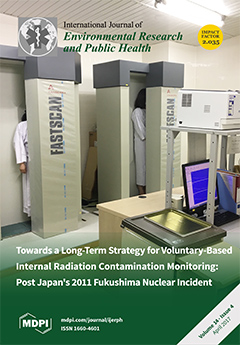1
Department of Epidemiology and Biostatistics, School of Public Health, Imperial College London, Norfolk Place, London W2 1PG, UK
2
Department of Global Health Policy, Graduate School of Medicine, The University of Tokyo, 7-3-1 Hongo, Bunkyo-ku, Tokyo 113-0033, Japan
3
Department of Radiation Protection, Minamisoma Municipal General Hospital, 2-54-6 Takami-cho, Haramachi-ku, Minamisoma, Fukushima 975-0033, Japan
4
Department of Surgery, Minamisoma Municipal General Hospital, 2-54-6 Takami-cho, Haramachi-ku, Minamisoma, Fukushima 975-0033, Japan
5
Department of Health Risk Communication, Fukushima Medical University School of Medicine, 1 Hikarigaoka, Fukushima, Fukushima 960-1295
6
Radiation Medical Science Center for the Fukushima Health Management Survey, Fukushima Medical University, 1 Hikarigaoka, Fukushima, Fukushima 960-1295, Japan
7
MRC-PHE Centre for Environment and Health, Department of Epidemiology and Biostatistics, School of Public Health, Imperial College London, Norfolk Place, London W2 1PG, UK
8
Department of Health Informatics, School of Public Health, Kyoto University, Yoshida-Konoe, Sakyo-ku, Kyoto 606-8501, Japan
9
Department of Radiation Protection, Soma Central Hospital, 3-5-18 Okinouchi, Soma, Fukushima 976-0016, Japan





